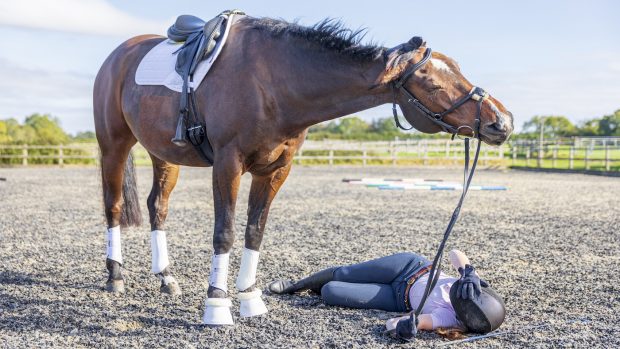Animals often do not show clear signs of being in pain, so their discomfort may go unnoticed, particularly in the early stages.
However, it is important to be careful in administering painkillers (analgesics), as some drugs in large doses can conceal or disguise pain, so that the danger signal is ignored and further damage is done.
Types of pain
In the horse, the two predominant types of pain are:
Musculoskeletal or somatic pain: soma is Greek for body and this type of pain can be divided into superficial somatic pain affecting the skin and deep somatic pain involving the muscles and skeleton, but, overall, it is pain on the outside of the body.
Visceral pain: viscera is Latin for the organs of the body cavity.
This refers to pain from the internal organs. With the horse, we tend to think of colic, but there are other types of visceral pain, such as pleuritis, which means inflammation of the chest cavity linings.
This can be incredibly painful in horses to the extent that they will refuse to move. It may be confused with laminitis, which is somatic pain due to inflammation of the laminae within the horse’s feet.
Acute v chronic
There are differences in pain related to the duration of discomfort.
The distinction between acute (sudden, sharp) pain and chronic (long-lasting, particularly for days) pain means that there are fundamental differences in the processing of these types of pain by the central nervous system.
Tolerance levels
Individual horses vary in their tolerance of pain, but horses generally are a lot less tolerant of pain than other animals. Abdominal pain in the horse is usually obvious as colic, while a cow may show minimal discomfort.
Many older horses show less clear responses to abdominal pain thanyounger ones. Colic signs in the older horse can be confusing and they may be in more pain than they appear on first examination.
Identifying pain
Pain-induced poor performance is apparent in a variety of signs, including:
- Swishing the tail, ears held flat back, grinding teeth and tossing head
- Inability to round the back and/or neck
- Being slow out of a starting gate
- Rushing fences and refusing to jump
- Intermittent subtle lameness.
Loss of appetite can be an excellent indication that a horse is unwell. However, in some fit competition horses their reluctance to eat may be related to their peak of fitness and not a sign of pain.
It is important to know andunderstand the horse in your care so you pick up pain problems early on.
Painkillers
Pain relief is best administered as early as possible before pain takes hold.
Good nursing is important. It is well recognised that a horse with a leg injury will be helped by a good support bandage to stabilise the injury, plus a decent haynet to distract him, as well as the drugs given by the vet.
Careful observation is vital. A horse cannot tell you where he hurts, but, equally, he can give good clues as to what is wrong.
Recognising the signs
- Restlessness
- Sweating
- Increased pulse
- Increased respiratory rate
- Lying down more than usual



